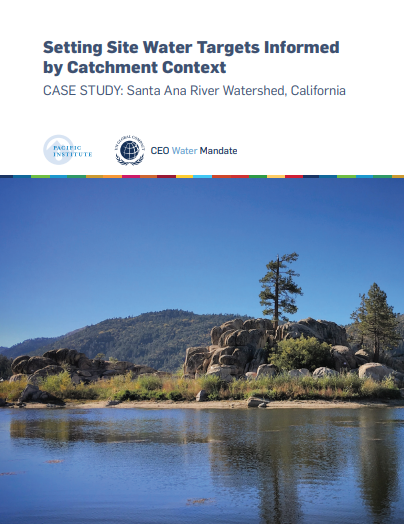Setting Site Water Targets Informed by Catchment Context Case Study: Santa Ana River Watershed, California

Setting Site Water Targets Informed by Catchment Context Case Study: Santa Ana River Watershed, California
Overview
By setting water targets that are informed by the local catchment context, companies can maximize impact and improve water security by addressing the key water challenges in the region and aligning their strategies with public sector goals, including the local water management goals and the United Nations Sustainable Development Goals. This case study documents a two-year pilot test of a new approach to setting site water targets in the Santa Ana River Watershed in Southern California.
The purpose of this pilot was to help participating companies understand the local water context and engage with peer companies, public sector water managers, and other stakeholders in the catchment to align on key water challenges and set meaningful site targets. The case study was developed by the Pacific Institute and the United Nations Global Compact CEO Water Mandate, for which the Pacific Institute is co-secretariat.

